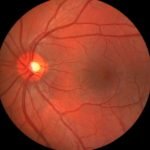Working with LGBTQ Patients: The Importance of Increasing Cultural Competency – Part 2
Abigail Egginton, ND
Naturopathic Perspective
This is the second part of a 2-part article discussing competent care for LGBTQ patients. Part 1 discussed the recent National Institutes of Health (NIH) determination of sexual and gender minorities (SGM) as a health disparity group related to the variety of increased risk factors faced by this demographic – risk factors that relate, at least in part, to social stigma and lack of providers informed on LGBTQ healthcare needs. The statistics suggest that this less-than-optimal care can especially impact teens and older adults who identify as sexual or gender minorities. Recent studies highlighting practitioner bias reveal the need to improve our knowledge of how to best support our patients who are part of this minority group.
Negative Experiences Seeking Care
While the connection between the health of the LGBT population and the biases within the medical profession have not been fully sussed out in research, one can easily see the connection between delayed care and the possibility of facing discrimination or ignorance. In a survey of nearly 5000 LGBT individuals and people living with HIV, more than half had experienced healthcare discrimination, such as being refused treatment or healthcare providers refusing to touch them.1 In a 2009 report by the Center for American Progress, 29% of LGBT individuals reported delaying necessary visits to the doctor, as compared with 15% of individuals who identified as straight.2 A similar percentage of transgender patients report delaying care due to discrimination.3 A quarter of transgender people surveyed reported that they had been harassed or disrespected in a hospital or doctor’s office.3 Nearly half of transgender men reported “harassment, physical assault or denial of equal treatment in a doctor’s office or hospital,” according to a 2015 survey.4
With the recent proposed repeal of the Affordable Care Act (ACA), protections afforded to the LGBT community through the non-discrimination clause5 are at risk of being rescinded. A paper released by Fenway Health outlines the possible impacts on the LGBT community as well as on those living with HIV.6 An end to the ACA could jeopardize or eliminate federal programs that deliver care to a higher percentage of LGBT people.5 Programs such as those that provide medications to low-income HIV individuals (Aids Drug Assistance Program, or ADAP) could be cut, further complicating the access to quality and competent care.7
Matthew Kavanaugh, a policy analyst for the organization Health Gap Global Access Project, was quoted as saying, “One of the most important things that happened with Medicaid expansion is that people were able to move off of ADAP and not just get HIV drugs but full [health] insurance. If that rolls back, it’s likely we will see huge problems with ADAP. That in turn could hurt the US effort to control HIV.”8
Policy aside, navigating a healthcare system that has traditionally not considered the best way to care for this population can be daunting for LGBTQ individuals. On top of potentially facing discrimination, the patients themselves often end up educating their providers on SGM health issues, a responsibility that should rest with the provider.
Finding & Training Competent Providers
A study published in the American Journal of Public Health described the difficulty of finding a doctor who is competent in the care of LGBT patients.9 Only 15% of teaching hospitals surveyed had a list of LGBT-competent doctors, and only 16% reported offering what was described as “full” LGBT competency training at their institution; 52% of teaching hospitals surveyed had no training at all.9
The degree of SGM competency of current medical professionals can easily be blamed on lack of training. A white paper published in 2014 reported that medical schools spend, on average, 5 hours covering topics related to LGBT health and that little to none of this training covers the health of transgender people.10 In the same year, however, the Association of American Medical Colleges (AAMC) developed and published competencies intended for medical schools to ensure that physicians are trained to provide equitable care for LGBTQ, gender non-conforming, and DSD (disorders of sex development) individuals.11 University of Louisville’s School of Medicine was the first to incorporate these competences, and has done so thoroughly and comprehensively by integrating information about LGBTQ health throughout their curriculum and spreading it over the 4 years; by doing so, it is serving as a model to other medical colleges.12 Recently, the District of Columbia expanded on the idea of competencies by passing legislation requiring cultural competency training for all healthcare providers on the care of LGBT patients.13
Improvements
While competency training implies competence, the reality is that depending on the duration and quality of the education, the requirement of a program does not necessarily equate with expertise or proficiency. To better care for this growing demographic, doctors must become aware of their own internal biases regarding gender and sexual orientation and must stay up to date on the latest standards of care for this patient population.
An example of failure to stay current with SGM-related healthcare is evidenced by the use of the HIV medication, emtricitabine/tenofovir disoproxil, which has been approved for pre-exposure prophylaxis (PrEP) of HIV since July of 2012. While it has been found to effectively prevent contraction of the HIV virus by more than 90% when used consistently, a 2015 survey of primary-care providers found that only 1 in 3 primary-care doctors and nurses even knew of the existence of PrEP.14
Considering our own biases in working with these patients is not only best practice but is also consistent with naturopathic medical philosophy. “Obstacles to cure” in a LGBTQ patient may be more significantly influenced by social determinants of health that are in conflict with that patient’s individual identity. Shared decision-making may help to improve the doctor-patient relationship for those who have had previous negative experiences and may help decrease the impact of practitioner biases.15-17
Approach
Beyond bringing awareness to biases and understanding standards of care for LGBTQ patients, providers must think about inclusivity in their office practices, policies, and communications.
Creating a welcoming and affirming practice and approach may necessitate some changes if you have not treated many SGM patients to-date. When considering the provision of better care to the LGBTQ patient population, here are some factors to keep in mind:
- Do not automatically assume that a patient is heterosexual. By accepting patients who come out to you as a SGM, you not only have the opportunity to provide them with better care, but this positive healthcare experience can also potentially impact any internalized homophobia and help them to continue to develop a positive identity.
- Remember that some patients have had prior negative experiences and it may take them several visits before they trust the relationship enough to reveal information about their sexuality or gender identity
- Remember questions such as “Are you having sexual contact with other individuals that involves the exchange of body fluids?” If the answer is yes, ask them how many partners they’ve had within the past 6 months, and then within the past year. Ask if their partners are men, women, or both. If a patient is offended by these questions, remind them that your practice is one that is open to everyone and where all people should feel comfortable regardless of who they are.
- Discuss the risk factors that impact the LGBTQ population in greater numbers, such as tobacco, alcohol, and drug abuse. Screen for depression and suicide risk in all LGBTQ patients, regardless of how they present. Related risk factors include HPV-associated cancers (because of higher rates of smoking and drinking) and breast cancer in lesbian women (because of increased incidence of obesity).18
- Discuss relevant sexually-transmitted infection (STI) and cancer screenings, and be mindful of language while doing so. While a trans man may have a cervix that needs to be screened, discussion about anatomy that they might feel negatively about must be conducted thoughtfully and tactfully. Be aware of cancers for which LGBTQ patients are at greater risk. For example, screen for anal cancers by Pap smear in MSM. Your electronic medical records (EMR) program may be able to help prompt you to consider the relevant risk factors and necessary screenings based on a patient’s identity – a tool known as decision support. For example, while some EMR programs may remind clinicians that everyone between the ages of 15-65 should have an HIV test, men who have sex with men may need to be tested more frequently.
- Follow the 2014 PrEP Clinical Practice Guidelines19 to perform recommended tests, and prescribe PrEP to patients without HIV who could benefit
- For trans patients on hormone therapy, there is still much research that must be done to better understand the long-term impact of hormone use. Screening for the risk factors that we are aware of, however, such as heart health, is an important part of comprehensive trans care.
- Inclusive communication will help identify a patient’s support system, which will in turn have positive effects on their compliance. Ask whom they include in their family, whom they live with, and whether they have a partner or spouse. Since the LGBTQ population deals with a greater incidence of suicidal ideation, building family support is also an important suicide prevention strategy.20
- Ask about a patient’s family-planning ideas. A growing number of LGBT people are starting families, and initiating this inquiry is a good way to demonstrate inclusivity while getting to better know your patient.21
- Know the social determinants of health that most impact minorities in your area. For example, if gun violence is a concern, this may be a discussion you initiate with SGM patients who are at greater risk of harassment and victimization.
- Consider how you can make your practice as inclusive and welcoming as possible. For example, post LGBT “SafeZone” signs in your office; have images of same-sex couples on your website or blog; have referrals and directions to local providers that are LGBT-friendly.
- Train all your staff in LGBT sensitivity, nondiscrimination policies, and inclusive communication22
- Trans people have reported providers conflating their gender identity with physical health issues not related to gender-confirming hormone therapy. Be cautious and informed when relating gender and hormone therapy to health concerns that may seem unrelated to the patient.
It is interesting to note that despite the suboptimal care that many SGM patients have received, certain LGBT populations demonstrate resilience such that health recommendations and support around healthy lifestyle changes may be well received. For example, despite being statistically more overweight than heterosexual women, a nationwide study found that lesbian and bisexual women actually have higher-quality diets than their heterosexual counterparts.23 This suggests that LGBTQ patients may be particularly well-suited to naturopathic care and that exploring the foundations of health with these patients may be of significant benefit to their well-being.
In the survey of older adults by the National Institute on Aging that was mentioned earlier in this paper,24 82% of LGBTQ people over the age of 50 were found to engage in moderate physical activity, and 91% were found to engage in wellness activities. In light of the increased incidence of disability and disease revealed in the survey, in comparison to heterosexual older Americans, these health-focused findings suggest that this population may be motivated as patients to stay healthy and “beat” the odds with support and patient education. Ninety-percent of those surveyed expressed feeling positive about belonging to their LGBT communities.24
Supporting Further Research
While recent research has certainly expanded upon our understanding of how to better care for our SGM patients, continued work in this area is necessary. To support these research efforts, you can help by telling patients about a long-term study being conducted by the University of California at San Francisco. The UCSF PRIDE study aims to be the queer version of the Framingham Health Study in terms of its breadth and duration.25 Encourage your LGBTQ patients to download the Pride app and to participate in the data collection. Participants will complete an annual health questionnaire that takes approximately 30 minutes once a year.
Additional Resources
- Gay and Lesbian Medical Association (GLMA)’s online provider directory: Helps patients locate LGBT-friendly health professionals. You can register for free to be a listed provider.
- glma.org
- Human Rights Campaign: Has a Healthcare Equality Index that has evaluated thousands of healthcare facilities nationwide and can be a helpful resource for finding LGBTQ-supportive providers
- hrc.org/hei
- TransLine: A service that allows doctors nationwide to ask clinical experts for help with trans patients
- project-health.org/transline
- American Medical Association’s “Physician Resources for an LGBTQ-inclusive practice”
- ama-assn.org/delivering-care/physician -resources-lgbtq-inclusive-practice
- World Professional Association for Transgender Health
- wpath.org
- LGBT Health Workforce Conference
- http://bngap.org/lgbthwfconf/
- The book Fenway Guide to Lesbian, Gay, Bisexual and Transgender Health (Makadon HJ, Mayer KH, Potter J, Goldhammer H, eds)
- Fenway Institute’s National LGBT Health Education Center has lots of online resources, including free, online learning modules that provide CME credit
- lgbthealtheducation.org/lgbt-education/learning-modules/
- org: Aims to help doctors, nurses and medical professionals unlearn racial bias and elevate the quality of healthcare for black SGMs
- hishealth.org/trainings
- Resources for your LGBTQ patients
- Patient Toolkit : www.rainbowhealth.org/resources-for-you/patient-toolkit/
- Human Rights Campaign’s Safer Sex for Trans Bodies Guide: www.hrc.org/resources/safer-sex-for-trans-bodies
- Resources for LGBT cancer patients
- http://cancer-network.org
- lbbc.org/lgbt-breast-cancer/lbbc-resources
Videos
- YouTube: “Vanessa Goes to the Doctor”
Refs:
- Lambda Legal. When Health Care Isn’t Caring: Lambda Legal’s Survey of Discrimination Against LGBT People and People with HIV. 2010. Available at: https://www.lambdalegal.org/sites/default/files/publications/downloads/whcic-report_when-health-care-isnt-caring.pdf. Accessed April 15, 2017.
- Krehely J. How to Close the LGBT Health Disparities Gap. December 21, 2009. Center for American Progress. Available at: https://www.americanprogress.org/issues/lgbt/reports/2009/12/21/7048/how-to-close-the-lgbt-health-disparities-gap/. Accessed April 15, 2017.
- Grant JM, Mottet LA, Tanis J. Injustice at Every Turn: A Report of the National Transgender Discrimination Survey; 2011. National Center for Transgender Equality. Available at: http://www.thetaskforce.org/static_html/downloads/reports/reports/ntds_full.pdf. Accessed April 20, 2017.
- Shires DA, Jaffee K. Factors associated with health care discrimination experiences among a national sample of female-to-male transgender individuals. Health Soc Work. 2015;40(2):134-141.
- Wang T, Kelman E, Cahill S. What the New Affordable Care Act Nondiscrimination Rule Means for Providers and LGBT patients. September, 2016. The Fenway Institute. Available at: http://fenwayhealth.org/wp-content/uploads/ACA-1557-Non-Discrimination-LGBTs-Brief-v2.pdf. Accessed April 20, 2017.
- Wang T, Cahill S. What the American Health Care Act means for LGBT People and People Living with HIV. 2017. The Fenway Institute. Available at: http://fenwayhealth.org/wp-content/uploads/2017/03/Policy-Brief-What-AHCA-means-for-LGBT-PLWH-final.pdf. Accessed April 20, 2017.
- Macsata BM. Despite Trump’s Troublesome Policies, HIV Advocacy Must Remain in Motion. March 22, 2017. AIDS Drug Assistance Program. Available at: http://adapadvocacyassociation.blogspot.com/2017/03/despite-trumps-troublesome-policies-hiv.html. Accessed April 20, 2017.
- Health Gap in the Media. Posted on Press by Brittany Herrick. December 17, 2015. Health Gap Global Access Project. Available at: http://www.healthgap.org/tags/global_health. Accessed April 20, 2017.
- Khalili J, Leung LB, Diamant AL. Finding the perfect doctor: identifying lesbian, gay, bisexual, and transgender-competent physicians. Am J Public Health. 2015;105(6):1114-1119.
- Burkhalter JE, Margolies L, Sigurdsson LM, et al. The National LGBT Cancer Action Plan: A White Paper of the 2014 National Summit on Cancer in the LGBT Communities. LGBT Health. 2016;3(1):19-31.
- Association of American Medical Colleges. Implementing Curricular and Institutional Climate Changes to Improve Health Care for Individuals Who Are LGBT, Gender Nonconforming, or Born with DSD: A Resource for Medical Educators. 2014. AAMC Web site. https://members.aamc.org/eweb/upload/LGBTDSD%20Publication.pdf. Accessed April 20, 2017.
- LGBT Health and Wellness Competency Certificate. 2016-2017 LGBT Health and Wellness Competency Series. University of Louisville Web site. http://louisville.edu/lgbt/lgbt-hsc/lgbt-health-and-wellness-competency-certificate-1. Accessed April 20, 2017.
- LGBTQ Cultural Competency Continuing Education Amendment Act. 2015. [enacted]. Bill available at: http://lims.dccouncil.us/Download/33671/B21-0168-Introduction.pdf. Accessed April 20, 2017.
- Centers for Disease Control and Prevention. Daily Pill Can Prevent HIV. Last updated November 24, 2015. CDC Web site. https://www.cdc.gov/vitalsigns/hivprep/index.html. Accessed April 15, 2017.
- Peek ME, Lopez FY, Williams HS, et al. Development of a Conceptual Framework for Understanding Shared Decision making Among African-American LGBT Patients and their Clinicians. J Gen Intern Med. 2016;31(6):677-687.
- DeMeester RH, Lopez RY, Moore JE, et al. A Model of Organizational Context and Shared Decision Making: Application to LGBT Racial and Ethnic Minority Patients. J Gen Intern Med. 2016;31(6):651-662.
- Nathan AG, Marshall IM, Cooper JM, et al. Use of Decision Aids with Minority Patients: A Systematic Review. J Gen Intern Med. 2016;31(6):663-676.
- Quinn GP, Sanchez JA, Sutton SK, et al. Cancer and lesbian, gay, bisexual, transgender/transsexual, and queer/questioning (LGBTQ) populations. CA Cancer J Clin. 2015;65(5):384-400.
- Centers for Disease Control and Prevention. Preexposure Prophylaxis for the Prevention of HIV Infection in the United States – 2014. A Clinical Practice Guideline. CDC Web site. https://www.cdc.gov/hiv/pdf/guidelines/PrEPguidelines2014.pdf. Accessed April 15, 2017.
- O’Brien KH, Putney JM, Hebert NW, et al. Sexual and Gender Minority Youth Suicide: Understanding Subgroup Differences to Inform Interventions. LGBT Health. 2016;3(4):248-251.
- Pathways to Parenthood for LGBT People. 2016. National LGBT Health Education Center: A Program of the Fenway Institute. Available at: https://www.lgbthealtheducation.org/publication/pathways-parenthood-lgbt-people/. Accessed April 20, 2017.
- Healthcare Equality Index 2017. Human Rights Campaign Foundation Web site. http://www.hrc.org/hei. Accessed April 20, 2017.
- VanKim NA, Austin SB, Jun HJ, et al. Dietary Patterns during Adulthood among Lesbian, Bisexual, and Heterosexual Women in the Nurses’ Health Study II. J Acad Nutr Diet. 2017;117(3):386-395.
- Fredriksen-Goldsen KI, Kim HJ, Emlet C, et al. The Aging and Health Report: Disparities and Resilience among Lesbian, Gay, Bisexual, and Transgender Older Adults. Seattle, WA: Institute for Multigenerational Health; 2011. Available at: http://age-pride.org/wordpress/wp-content/uploads/2012/10/Executive_Summary10-25-12.pdf. Accessed April 20, 2017.
- The Pride Study. Your Story. Your Health. 2017. Available at: https://www.pridestudy.org/. Accessed April 20, 2017.
Image Copyright: <a href=’https://www.123rf.com/profile_chagin’>chagin / 123RF Stock Photo</a>
 Abigail Egginton, ND, graduated from Bastyr University in 2011. She currently practices in Pleasantville, NY, and Ridgefield, CT, and also teaches at the College of New Rochelle in NY. Dr Egginton’s practice focuses on oncology, women’s health, and pediatrics, in addition to LGBTQ health. Dr Egginton is passionate about supporting the health of the LGBTQ community and has volunteered for Camp Ten Trees in Seattle in this capacity.
Abigail Egginton, ND, graduated from Bastyr University in 2011. She currently practices in Pleasantville, NY, and Ridgefield, CT, and also teaches at the College of New Rochelle in NY. Dr Egginton’s practice focuses on oncology, women’s health, and pediatrics, in addition to LGBTQ health. Dr Egginton is passionate about supporting the health of the LGBTQ community and has volunteered for Camp Ten Trees in Seattle in this capacity.










